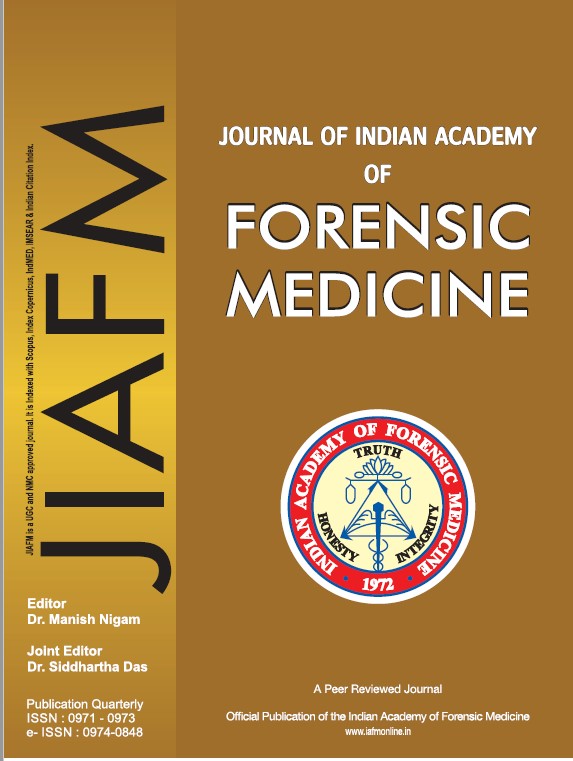Histopathological Changes in Skin and Subcutaneous Tissues at Ligature Site in Cases of Death Due to Hanging and Strangulation
Keywords:
Hanging histopathology, Strangulation histopathology, Asphyxia, Ligature mark, Ligature materialAbstract
The ligature mark on the neck is considered the principal, most important and specific sign of death in hanging. But, the presence of a ligature mark alone is not diagnostic of death from hanging as this can also be a purely cadaveric phenomenon as it may be produced if a body has been suspended after death. Also, there is difficult for forensic pathologists to differentiate between hanging and strangulation based on analysis of the gross appearance of ligature marks alone. Only a few have conducted histopathological studies of the neck tissues in such deaths to confirm the type and cause of the death. It was hypothesised that, in such cases, evaluation of histopathological findings of neck structures if undertaken would be more conclusive in establishing the cause of death. An observational cross-sectional study of histopathological changes in skin and subcutaneous tissues at ligature site in cases of death due to hanging and strangulation was conducted in the Department of Forensic Medicine, Government Medical College, Thiruvananthapuram. Considering the various histopathological changes, skin compression, skin haemorrhage, and cellular infiltration of the skin were more marked in strangulation than hanging. Skin congestion/plethora and rupture and oedema were equally present in both hanging and strangulation. The haemorrhage of subcutaneous tissue was more marked in strangulation than in hanging. Congestion of subcutaneous tissue was equally present in hanging and strangulation. Rupture of skin was the commonest histopathological finding either when a hard ligature or soft ligature material was used. The study concludes that a detailed evaluation of the gross and histopathological findings of the neck structures if undertaken would be more conclusive in establishing the cause and manner of death to aid the administration of justice.


